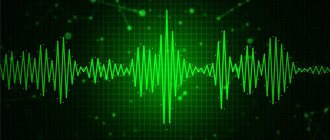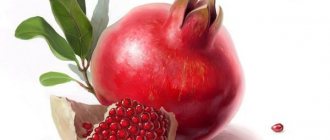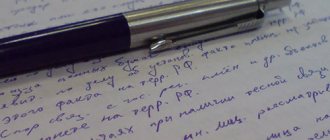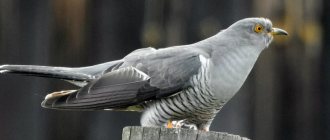What fabric is best to choose for sewing a children's dress?
For children's clothing, natural fabrics are most often used, which not only have increased breathability, but also absorb moisture well.
Also, natural fibers are actively used due to their hypoallergenicity and pleasant tactile sensations; they do not hinder movement, yet fit snugly to the body and retain heat. In particular, children's cotton fabrics are used in the form of various varieties:
Batiste, a fabric used to make children's dresses, translucent blouses or decorative elements, and sometimes bed linen.
Chintz, which is lightweight cotton. Used when sewing things for newborns, including bed linen and underwear.
Fleece is an excellent fabric for sewing insulated diapers for children.
Flannel, a type of woolen fabric often called "winter cotton". It is used to make warm dresses for the winter, various vests and diapers.
The main disadvantage of cotton fabrics is that they wear out quickly and wrinkle easily, so synthetic fibers are often added to their composition to ensure density and durability.
More information about different fabrics can be found in the video:
Many children's clothes are 100% polyester. Is this material useful?
Polyester is a synthetic material that is obtained from polyester fibers. It is strong, durable, but has very low air conductivity, gets wet quickly and does not dry out, since moisture is deeply absorbed into the fabric.
Based on this, it is not very suitable for children's clothing, since when the baby actively moves, his clothes will get wet and he may catch a cold or skin rash due to allergies.
Neoprene, a high-strength material that is resistant to both sun exposure and mechanical and chemical influences, is often used for tailoring. Neoprene clothing is surprisingly durable and gets dirty very little, since dirt does not linger on the surface of the fabric.
Also, the list of synthetic fabrics includes viscose. It can be considered the most natural among its analogues, which is due to its properties that imitate cotton. Viscose is used to make soft and light dresses that are not only beautiful, but also durable.
There is a separate type of fabric for children - children's knitwear. They are often used for sewing outerwear or warm clothes.
In terms of its qualities, knitwear is not inferior to good cotton fabric, as it has similar properties: it conducts air well, is hygroscopic, retains body heat and protects against overheating.
The most commonly used materials when sewing children's clothing are kulirka, interlock and fitter. Each of them has characteristic differences:
Kulirka is a thin cotton-like material that has peculiar braids on the front side. Mostly summer items are made from it, for example, T-shirts or shorts, light dresses and T-shirts. At the same time, the fabric is light and allows the body to breathe, eliminating the possibility of overheating.
Interlock is a double-sided fabric that is equally pleasant on both sides and is resistant to deformation. It is used for sewing clothes for the autumn or winter, in particular: sweatshirts or cardigans.
Footer is a special type of fabric, distinguished by its softness and warmth. Used in the manufacture of warm clothes, pajamas or overalls.
Ribana is an elastic knitted fabric for sewing children's underwear or nighties.
You can learn more about these fabrics from the video:
SPEECH DEVELOPMENT. LEXICAL TOPIC “CLOTHING”.
SPEECH DEVELOPMENT. LEXICAL TOPIC “CLOTHING”.
CHILDREN SHOULD KNOW NOUNS: coat, fur coat, overalls, raincoat, jacket, suit, trousers, jacket, shorts, sundress, blouse, skirt, dress, shirt, robe, sweater, jumper, jacket, vest, mittens, gloves, socks, tights , T-shirt, briefs, swimsuit, swimming trunks, hat, cap, beret, scarf, hat, scarf, collar, sleeve, frill, zipper, pocket, hood, belt, lace, buttons, apron, patch, sewing, shopping.
ADJECTIVES: beautiful, long, short, narrow, wide, new, old, dirty, clean, warm, cold, light, wrinkled, ironed, woolen, calico, knitted, fur, weekend, homemade, festive, elegant, comfortable, leather, checkered, striped, summer, winter, spring, autumn, demi-season.
VERBS: put on, put on, take off, put away, hang, fold, iron, iron, wash, rinse, dry, weigh, mend, darn, take care of, care for, knit, sew, buy, fasten, sew up, measure, unfasten, wrinkle, get dirty.
CHILDREN SHOULD BE ABLE TO FORM ADJECTIVES FROM NOUNS:. Fur hat – fur. Leather gloves – leather. Clothes for winter - winter. Bathrobe for home - homemade.
SELECT ADJECTIVES TO THE NOUNS: Jacket (what?) - knitted, woolen, warm, red, new... Dress (what?) - elegant, casual, festive, lace... Scarf (what?) - long, blue, woolen, knitted...
ALIGN NOUNS WITH NUMERALS: One is a sock, two is a sock, five is a sock. One is a coat, two is a coat, five is a coat. One is a fur coat, two are fur coats, five are fur coats.
ANSWER THE QUESTIONS IN COMPLETE, EXTENSIVE SENTENCES: Where do they sell clothes and fabrics? Who works in the store? Who works in the studio? What do they do with clothes in the store? What do they do with clothes in the studio?
COMPLETE A DESCRIPTIVE STORY ACCORDING TO PLAN: Title. What colour. What does it consist of? What material. What time of year is it intended for?
The snake crawled onto the tree, saved the tree with itself: When the winds came, it warmed the tree. (Scarf)
The path is sewn - tied and tied to the house. It will run around the house, And then it will freeze - it lies, It guards the house, It drives away the cold. (Scarf)
He’s not a tie, not a collar, but he’s used to squeezing his neck. But not always, but only when it’s cold. (Scarf)
Black, not the earth, Fluffy, not the snow, Warm, not the stove. (Fur coat)
Wide and thin, it inflates its sides, it rides on me all day. He sits without getting down, And when night comes, He curls up and sleeps. (Shirt)
Source
List of required tools and materials
Among the main tools is, of course, the sewing machine itself, the selected fabric and thread. Threads need to be durable and preferably synthetic.
Before work, you need to unwind the coil and check it for the presence of knots or excess seals that could interfere with operation. As for fabric, you need to carefully read all the options; some materials can stretch, which is actively used in some cases and causes difficulty in others.
The choice of style for the future dress depends on the degree of elasticity of the fabric.
It is recommended to wash new fabric in warm water before marking and sewing to reduce the possibility of shrinkage. You also need to iron the material to completely smooth out possible wrinkles and clearly transfer the pattern.
Additional tools may also be useful in your work: various types of scissors, measuring tape, pins, chalk or marking pen, decorative elements.
Preschoolers
This phase of the child’s development logically follows from the previous one, but now the child needs to learn greater independence in preparation for school: he must be able to dress, put on his shoes and go to the toilet independently. Clothes should also be chosen keeping this trend in mind.
Note!
- Despite the fact that a winter jacket with fur looks quite cute, it would be much more practical to opt for a regular jacket with a hood, which you can wash at any time.
- Waterproof boots are ideal for preschoolers - their feet will be dry and warm in any situation.
- At this age, it is still difficult for a child to tie shoelaces, so it is better to choose shoes with Velcro fastener.
Dress pattern
To create a pattern, the easiest way is to take one of the child’s clothes and base it on its parameters. For example, to pattern a dress, it is recommended to take one of the girl’s T-shirts. You also need to take a sheet of paper on which the desired dress will fit in full size. We place the T-shirt on the sheet and mark its outline.
To mark the dress, you need to take into account the child’s size; it is important to note the following numbers on the pattern: shoulder length, width under the bust and armhole length, i.e. holes for hands. It is convenient to take this data by measuring the finished product, in our case, a T-shirt.
Once the desired drawing is completed, the pattern is transferred to the fabric. It is important that you need to leave seam allowances on all sides and, if necessary, make undercuts.
The figure describes each step in detail.
You need to pay attention to a number of parameters:
- The shoulders of the dress should be slightly sloping.
- You cannot cut the bottom of the dress in straight lines, it must be round.
- The sides of the dress should not go straight down, but should be positioned like a trapezoid.
- It is necessary to take into account the width of the dress along the armpit line and the size of the armhole, since these two factors determine whether the dress will suit your child or not.
To simplify the work, the pattern is usually drawn only on one half of the dress, and the other is mirrored. This reduces the risk of confusion and helps maintain the symmetry of the resulting product.
It is important that on the back you need to make the armhole and neck curved inward, as this will be more comfortable for the child. Unfortunately, not all manufacturers of things follow this rule, but you try to follow it.
An example of a step-by-step dress pattern.
Older children
As children grow up, they become more and more active, so they need clothes that will not restrict their movements, will allow them to crawl and run, and that you can easily wash and then easily put on and take off your child, teaching him to dress independently.
Note!
- Choose clothes with small buttons, snaps, and Velcro fasteners to make them easy for your baby to fasten and unfasten. It is advisable to choose trousers and skirts with an elasticated belt.
- Do not put your child in very tight pants when he is getting used to the potty; It should be convenient for him to take off his pants when he wants to go to the toilet.
- It will take some time to teach your child to dress himself. Plus, your baby develops language skills as you interact with him while getting dressed.
- If your child wants to choose something on his own, limit his choice to two or three. This will avoid conflict and develop a sense of independence in the child.
Calculation of material for various types of dresses
In production, accounting for the required fabric is based on the length of the product, its width, sleeve size and hem of the dress at the bottom. This is also calculated individually for sewing a specific style and model.
You can analyze the fabric you need based on other people's measurements. For example, our client is a 12-year-old girl, parameters: height – 160 cm, chest volume – 75 cm. Based on the style, the fabric consumption also varies.
More details in the table:
| Style | Fabric consumption for sizes 40-42 |
| Straight silhouette with sleeves | dress length + sleeves + 40.0 cm |
| Model with sleeves and flared bottom | 2 lengths + sleeves + 40.0 cm |
| Sundress straight | product length + 40.0 cm |
| Flared sundress | two lengths + 40.0 cm |
The data given in the table will help you roughly imagine the volume of materials needed.
To accurately measure and create a pattern, you need to measure the following parameters: height, shoulder width, waist, hips and chest; you need to determine the width of the material itself and its characteristics; presence of frills, their size.
The length of the product is measured from the neck point to your desired level. In this case, the length of the sleeve is calculated from the place of its attachment at the armpit and at the top of the shoulder.
Also, if you plan to make a “sun” skirt, then the calculated volume of fabric changes - the length is multiplied by 4. If sewing is done from fabric containing a pattern, it is important to take into account its symmetrical arrangement and the combination of the pattern when sewing different parts.
Video on calculating the required amount of fabric:
Clothes in English for children
If you think about it, in any language the topic of clothing is devoted quite a lot of time, because in addition to simple descriptions, such as a blue dress, red shoes, we can make the description more complex and detailed. The same is true in English.
In the article we will analyze the names of the main items of clothing in English with translation and transcription. In addition, you will be presented with various games, exercises and videos for fun and easy memorization.
Directly clothes in English will be clothes [kləʊ(ð)z] (close, sound Z interdental).
For a more complete immersion in the topic of clothing, it would be a good idea to study the article on flowers in English with pronunciation so that your child can describe the item in more detail.
ATTENTION!
REGISTER FOR COURSES! RECRUITING! More details on the page: https://academy.multi-mama.ru/product/multi-predlozhenie/
For example, blue jeans - blue jeans, yellow t-shirt - yellow T-shirt, black boots - black boots and so on.
Video song about clothes in English for children
You can find a theme song on almost any topic. They are specially invented to support children's interest in the topic, as well as to make the lesson more fun.
The song can be just an ordinary audio file that you turn on, but it will be much more effective to support the song with visual material.
Here, for example, is a funny song with a small visual cartoon:
Let us remind you once again that it is not a bad idea to reinforce the rhymes and songs you are learning with visuals, for example, if you are reading a poem about a yellow sweater and blue jeans, prepare cards with images of these things.







